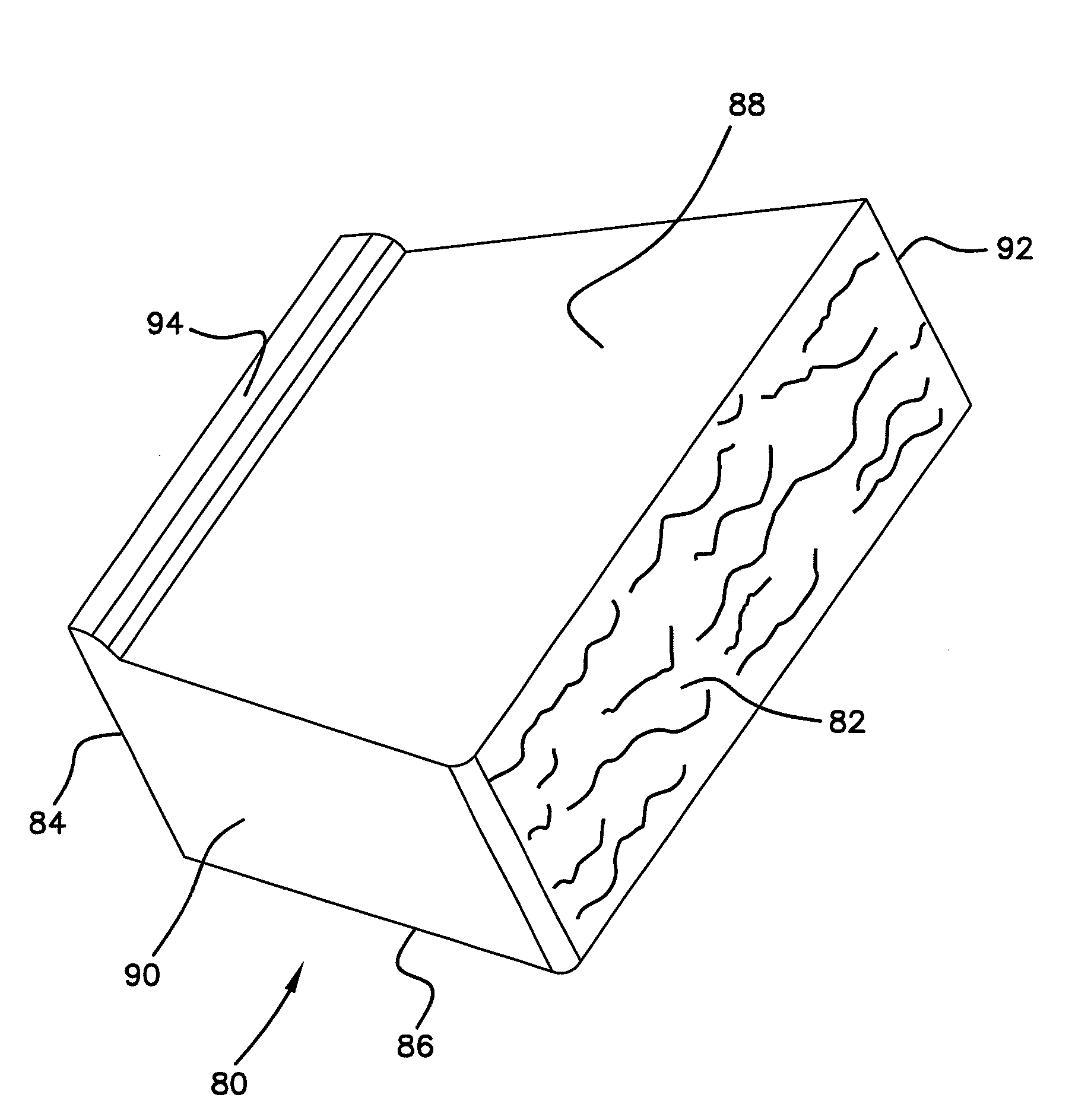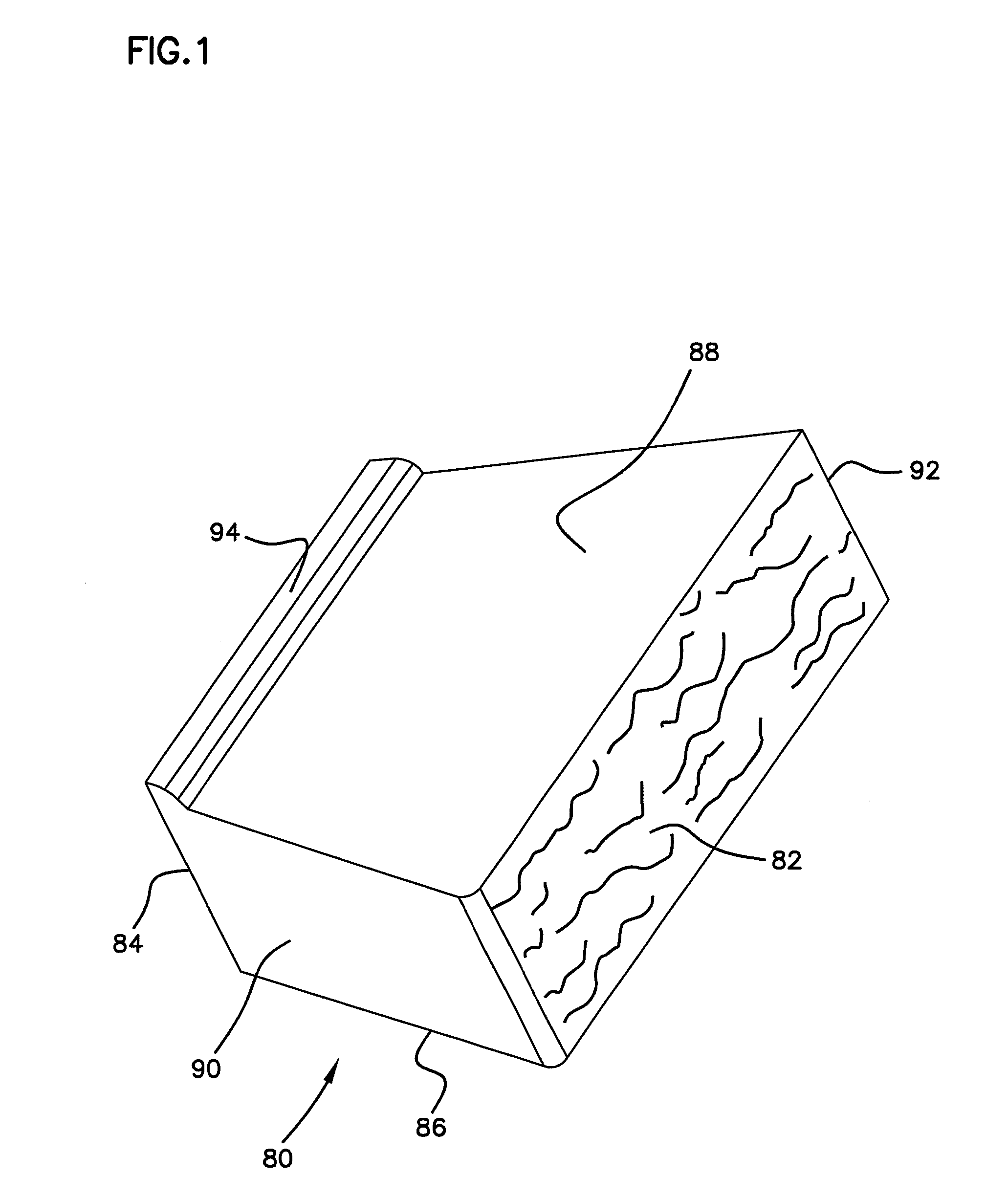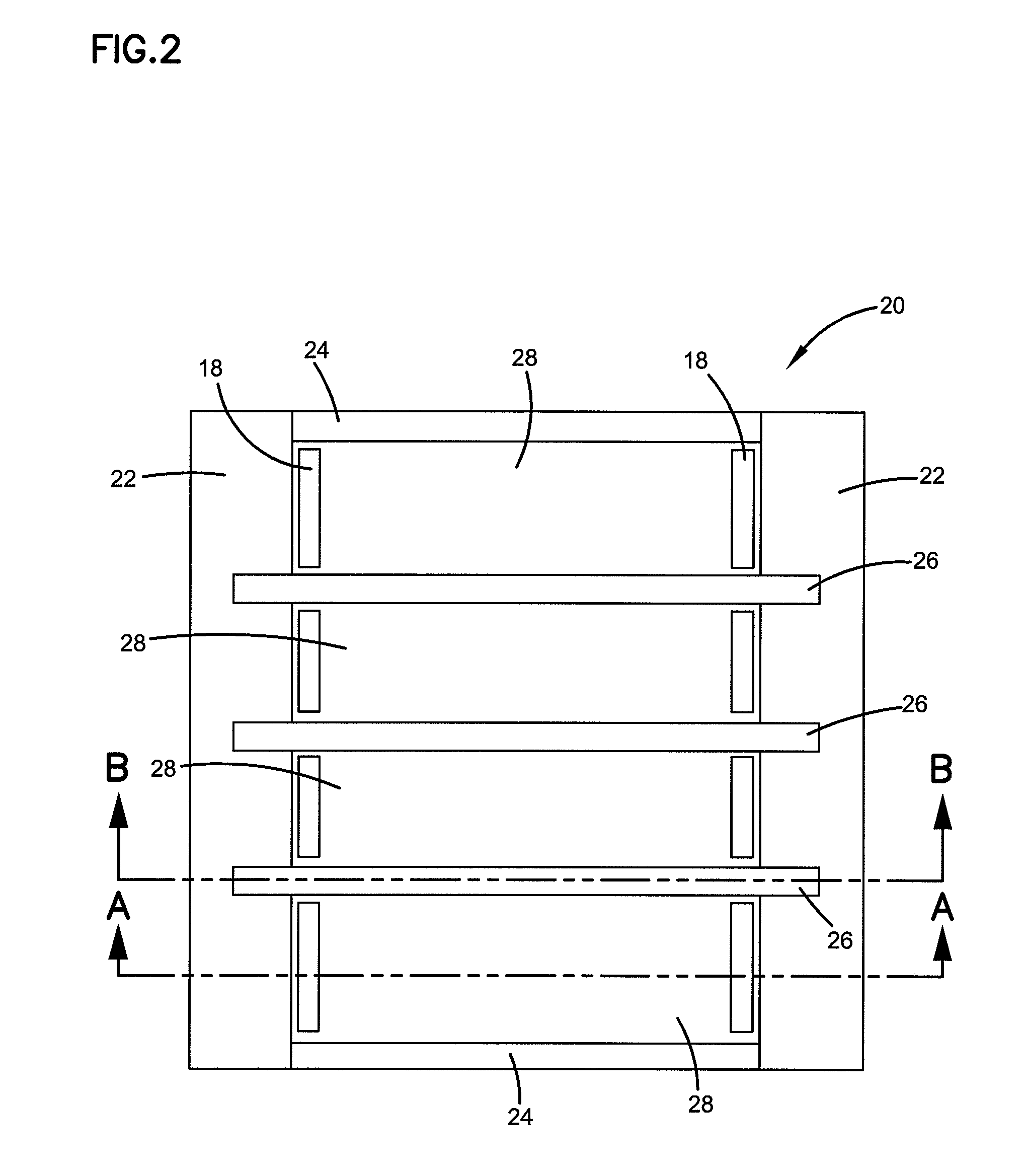Dimensional control of concrete blocks
a technology of dimensional control and concrete blocks, which is applied in the field of manufacture of concrete blocks, can solve the problems of less ability to accommodate variations, prone to block formation, and high cost of certain components of concrete mixtures, and achieves the effects of minimal play, improved control of flatness and parallelism, and sufficient stability
- Summary
- Abstract
- Description
- Claims
- Application Information
AI Technical Summary
Benefits of technology
Problems solved by technology
Method used
Image
Examples
Embodiment Construction
[0015]The present invention provides a division plate for a concrete block mold. The resulting surface that is shaped by the division plate is substantially flat, which aids in the construction of a high quality wall or other structure made from a plurality of the concrete blocks.
[0016]The division plate works in concert with an optimized concrete mixture to provide the desired control of the block geometry. The concrete mixture generally comprises coarse aggregate, sand (also called fine aggregate), cementitious material, colorant (also called pigment), and water. The concrete mixture can be made more stable and self-supporting by increasing the content of coarse aggregate material. However, a greater concentration of coarse aggregate material may prevent the formation of fine detail on the front face of the block, which is often desired when forming blocks front-face-up. Similarly, the concrete mixture can also generally be made more stable by increasing the amount of cementitious...
PUM
| Property | Measurement | Unit |
|---|---|---|
| thickness | aaaaa | aaaaa |
| thickness | aaaaa | aaaaa |
| thickness | aaaaa | aaaaa |
Abstract
Description
Claims
Application Information
 Login to View More
Login to View More - R&D
- Intellectual Property
- Life Sciences
- Materials
- Tech Scout
- Unparalleled Data Quality
- Higher Quality Content
- 60% Fewer Hallucinations
Browse by: Latest US Patents, China's latest patents, Technical Efficacy Thesaurus, Application Domain, Technology Topic, Popular Technical Reports.
© 2025 PatSnap. All rights reserved.Legal|Privacy policy|Modern Slavery Act Transparency Statement|Sitemap|About US| Contact US: help@patsnap.com



